It’s July, so it’s already time to get out there and look for shorebirds on their southbound migration. In fact, there have already been a couple reports of Upland Sandpipers here in Georgia. But this group of birds can be notoriously difficult to identify. So when you head out to the nearest beach, sod farm, or sewage treatment plant, you may want to take a specialized identification guide with you. But which one?
Here, I will be comparing the four most recent guides that cover North American shorebirds. However, two of them also cover Europe and Asia, and the other two, although focused on North America, would also be useful elsewhere.
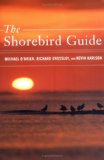 |
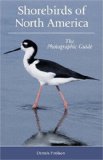 |
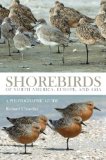 |
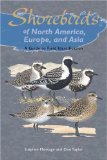 |
|
| The Shorebird Guide |
Shorebirds of North America: The Photographic Guide |
Shorebirds of North America, Europe, and Asia: A Photographic Guide |
Shorebirds of North America, Europe, and Asia: A Guide to Field Identification |
|
|---|---|---|---|---|
| Author | Michael O’Brien, Richard Crossley, Kevin Karlson | Dennis Paulson | Richard Chandler | Stephen Message and Don Taylor |
| Publish date | April, 2006 | January, 2005 | July, 2009 | March, 2006 |
| Price (MSRP) | $24.95 | $29.95 | $35.00 | $35.00 |
| Size (width x height x thickness) | 6″ x 9″ x 1 3/8″ | 5 1/2″ x 8 1/2″ x 1″ | 6 1/8″ x 9 1/4″ x 1 1/8″ | 6 1/8″ x 9 1/4″ x 1/2″ |
| # pages | 496 | 384 | 448 | 224 |
| # species | 91 | 94 | 134 | 124 |
| Illustrations | Photos | Photos | Photos | Paintings |
| Account/Plate layout | Two sections: 1st has photos, with limited text and maps; 2nd has species accounts | Everything in each species account | Everything in each species account | Two sections: 1st has plates on the right (multiple species), with some text on the facing page; 2nd has species accounts, with maps, more text, and shows the bird in flight |
| Range maps | Color; breeding, winter, resident, and migration (with two shades to show relative abundance) | NONE | Color; breeding, winter, resident | Color; breeding, winter, resident |
| Species accounts |
|
|
|
|
Recommendation
So, given all of these choices, which one should you get? Well, none of them are actually bad, and any would be helpful shorebirding. But in case you don’t want to carry around four shorebird guides, here are my thoughts on them.
I would immediately rule out Message/Taylor. I prefer general field guides that use paintings, but I think photographs work better for shorebirds. Plus, I just don’t care for most of the illustrations here. Some, admittedly, are pretty good. But most just look bad to me. I think it’s because the painter attempts to show the feathers in too great of detail. Personally, I just don’t care for that.
The Paulson and Chandler photographic guides are very similar in their approach and layout. The photographs are of similar quality. On average, Paulson includes just a bit more photos per species, but the ones in Chandler are larger. Chandler includes many more species, but this is largely irrelevant to North American birders since they both contain all of the birds likely to be seen here. I love the formatting and layout of Chandler’s guide; of the two, it just looks much better. After going back and forth between them, I think I prefer the newer guide from Chandler.
But there is no doubt in my mind that The Shorebird Guide is not only the best guide for shorebirds, it is the best family-specific guide that I have seen. The authors emphasize birding by impression (aka “jizz” or “giss”-based identification). They point out field marks that the others either do not mention, or bury in the text. And the photos are simply amazing! The thing I like best about this guide is that many of the photos show birds of different species together, with the captions helping to point out the differences. This is supremely helpful in learning these birds, but none of the other guides do this. Every North American birder (and probably any birder in the Northern Hemisphere) needs to have this book. It’s that good. (It also happens to be the cheapest!)
But really, can you have too many guides to shorebirds?
Full Reviews
- The Shorebird Guide
- Shorebirds of North America: The Photographic Guide
- Shorebirds of North America, Europe, and Asia: A Photographic Guide


Posted by Grant McCreary on July 22nd, 2009.





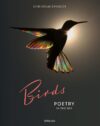
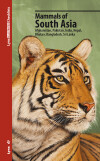
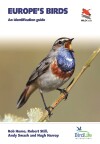
Hi,
As a Shorebird-lover I own all four of these guides, and I must say that I agree with your recommendations. ‘Both ‘The Shorebird Guide” and Chandler’s guide are excellent guides and I would personally recommend both of them to people with an interest for Shorebirds. The other two guides in this review are, as you said, not bad. They’re just not as good as ”The Shorebird Guide” and Chandler’s guide.
There are however a few things that I think ”The Shorebird Guide” is missing which Chandlers guide does have. The first thing is that the text and photo’s of the species are on different pages. Chandler’s guide does have them next to each other which makes it easier to use. On the other hand; the text in “The Shorebird Guide” is more detailed and thorough.
I also prefer the general lay-out of Chandlers guide over the lay out of ”The Shorebird Guide”. It makes it much easier to read.
The comparison of different species is very well done in both guides. Chandler’s guide using tables listing the characteristics that can be used to separate them, ”The Shorebird Guide” using photo’s with captions of the characteristics that should be noted.
All together I prefer ”The Shorebird Guide”, but I think it won’t do any bad to have both of them!
Daniël
Ps. ”But really, can you have too many guides to shorebirds?” I totally agree with that!
i think that the chandler guide is not that good, and that is because the use of wrong paper for the photo’s !!
Daniël – Nice analysis. I totally agree. I noticed the tables and thought they were a nice addition, but assumed that they would not be as useful as the photographic comparisons in The Shorebird Guide. I’ll have to take a closer look at them.
vbe – What’s wrong with the paper? I didn’t notice anything in my copy. Mine is the one published in the US by Princeton. Is that the one you have, or do you have the one published by Oxford? I wonder if there is a difference?
about the paper, its is not as glossy as the shorebird guide, its real raw paper , you see the grain !!!
I’ll take a closer look at the paper. I’m out of town at the moment, so it will be early next week.
The paper certainly isn’t glossy, but I don’t see any problems with it. If you look at the pictures close enough, you can see the pixels, especially on the lower quality/resolution pics. But that would be the same for most any book.
Thanks for a nice concise review.
[…] this narrow niche, The Shorebird Guide. Grant at The Birder’s Library composed an excellent Shorebird Guide Comparison matching up both of the books mentioned here along with a couple of less distinguished works. His […]
[…] http://www.birderslibrary.com/features/shorebird-guide-comparison.htm […]
[…] http://www.birderslibrary.com/features/shorebird-guide-comparison.htm […]
Thanks, very nice article and comparison!